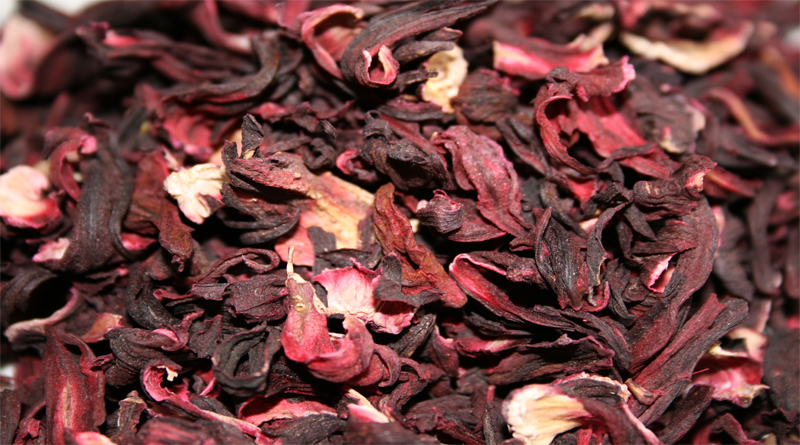In the 65th year since its discovery, the fermentation-based compound natamycin continues to enjoy growth across a broad spectrum of shelf-life extension solutions. The preservative is utilized by DSM across a range of its products, which are used to extend the shelf-life of a wide variety of dairy, baking and beverage offerings. FoodIngredientsFirst speaks to Ingrid Damen, Business Manager of Shelf Life Solutions at DSM, to shed light on the compound’s roots in history and its contemporary applications.
Natamycin was first discovered in a soil sample near Pietermaritzburg, South Africa, in 1954 by Dr. Jacques Waisvisz. He worked for the Dutch yeast producer Koninklijke Nederlandsche Gist- en Spiritusfabriek (KNG&SF). The business later became Gist-brocades and eventually DSM. Natamycin has been on the market since 1967.
Some applications – cheese, yogurt or fermented meat, like salami – are created through bacterial growth, which can lead to spoilage early on in a product’s shelf life, especially when exposed to warm temperatures, Damen explains. “By using natamycin-based preservatives, food producers can stop molds and yeasts from growing and keep their natural products fresh for longer, without impacting dairy or meat cultures that generate flavor.”
A short shelf life is a key characteristic of “natural” foods, which presents manufacturers with a growing “paradox.” While consumer demand for foods produced without chemical preservatives has increased, the industry is faced with growing challenges concerning food waste, safety and appearance.
A UN report notes that food loss and wastage adds up to US$1 trillion each year, with this accounting for 8-10 percent of the food system’s total GHG emissions between 2010 and 2016. Natural preservatives such as natamycin offer nonsynthetic solution to tackling this issue.
“Food manufacturers around the world often prefer natamycin-based preservatives over artificial ones. This is because these solutions allow them to naturally block the growth of yeasts and molds to keep products fresh for longer,” Damen highlights. “Natamycin-based preservation products are suited for a range of applications, including dairy, baking and beverages.”
Natamycin is applicable in cheeses, among a broader variety of food products.
Broad applications for natamycin
Extending shelf life with natural solutions and preventing microbial spoilage is a key challenge, particularly when developing cheese products, says Damen. “Natamycin-based solutions, such as DSM’s DelvoCid range, help protect cheese surfaces and brine baths against yeast and molds during and after the cheese ripening process.”
“It also protects spreadable cheese against yeast and mold growth following production. While DSM’s DelvoZyme helps to control Clostridium and prevent the late-blowing defect of semi-hard cheese, DelvoNis protects cheese products against gram-positive and spore-forming bacteria. By using DelvoCid in Panela cheese (a popular cheese in Latin America), DSM was able to extend the product’s shelf life from 21 to 38 days – allowing DSM’s customer to export or sell the product in more remote parts of the country it operates in,” she explains.
In bakery applications, natamycin helps extend the freshness of products, which is crucial for industrial bakers. “The challenge lies in extending baked goods’ shelf life by avoiding yeast and mold growth and delaying staling in breads and cakes. Working against all molds in breads, buns, tortilla and cakes, natamycin-based biopreservatives – like DSM’s DelvoCid portfolio – do not impact the look, taste or smell of the end product,” Damen says.
Natamycin-based preservatives are equally effective in preventing yeasts and molds from forming in liquids without impacting taste. DelvoCid is marketed as easy to formulate in beverages and powdered premixes. The ingredient reduces the pasteurization temperature of dairy, helping to keep delicate heat-sensitive flavors and aromas intact.
“The role of preservatives in beverages should not be underestimated. Mold, yeast and bacteria are the main microorganisms that cause spoilage in drinks and affect the bottom line, as well as being a major cause of food waste. For beverage producers, adding preservatives to prevent yeast, mold and bacteria ensures optimal product characteristics for the duration of a product’s shelf life, guarantees product safety and enables it to be transported across a wide geographic area,” says Damen.
In high pH beverages, commonly used preservatives sorbate and benzoate often create off-flavors, notes Damen. DSM application experts were able to reformulate these beverages with DelvoCid+ and DelvoNis and secured extended shelf life during storage, without impacting the flavor profile of the end products.
“DSM application experts reformulated an energy drink in Asia for one customer that was having difficulty achieving a desired level of protection from microbial spoilage with artificial preservatives alone. By reformulating the drink and adding DelvoCid to the recipe, the customer was able to achieve a microbial safe solution with enough shelf life,” says Damen.
DSM has further performed a variety of challenge tests for the yogurt category, including with tests those carried out at a temperature of 21°C (70°F). Results revealed that DelvoGuard was the best performing culture, compared with the other commercially available protective cultures tested. The natamycin-based solution extended the expiration date of a sweet yogurt at ambient temperatures by up to two weeks.
The test looked at how long the prototype stayed fresh when stirred and left uncovered at room temperature for 30 minutes twice a week to mimic consumer behavior. The experiment demonstrated that DelvoGuard enables dairy applications to stay fresh for up to 34 days once opened, under these conditions. When left uncovered and outside of the fridge for three days, the product also showed no sign of spoilage.
Results of the study indicate that using DelvoGuard enables dairy manufacturers to preserve yogurt more effectively and for longer in warmer climates, where cool transport options are limited, without affecting taste or appearance.
Consumer demand for natural products
Natural ingredients are consistently on-trend.
Extending the shelf life of products – preferably with natural ingredients – is a key consideration for food manufacturers globally, notes Damen.
“Most consumers check expiry dates on product labels, indicating that shelf life is a key purchasing driver. Consumers are demanding more from their food; they expect the products they buy to be healthy and fresh-looking, and have a more natural appeal and recognizable, short ingredients list,” she explains.
Today’s consumers want to see more natural, better-for-you, sustainably produced products, such as yogurts with reduced sugar and fat levels, as well as greater transparency in product labeling, Damen further highlights. “They are also leading increasingly busy lives and are looking for food options for ‘on-the-go’ consumption. Meanwhile, people don’t want to compromise on quality, indulgence or sensory characteristics.”
For the food industry, these trends not only mark the need for continued innovation, but also mean more stringent food protection standards are put in place to minimize the risk of spoilage-related incidents, stresses Damen. “Expanding our biopreservation product portfolio to offer a broader range of solutions that meet these changing needs is just one example of how we are driving innovation,” she concludes.
Source: Food Ingredients First










